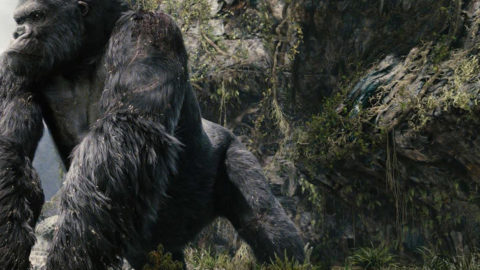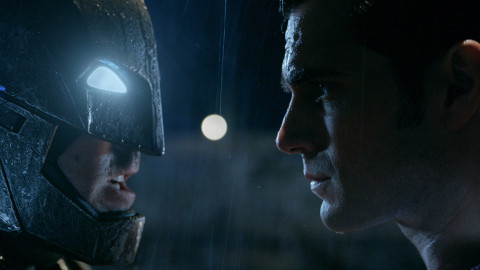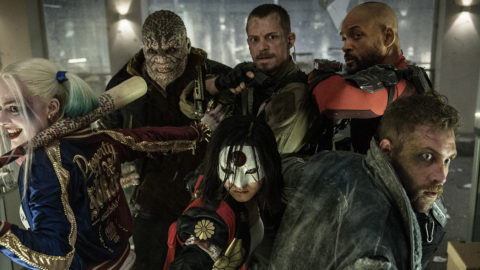Deep Focus: Wonder Woman
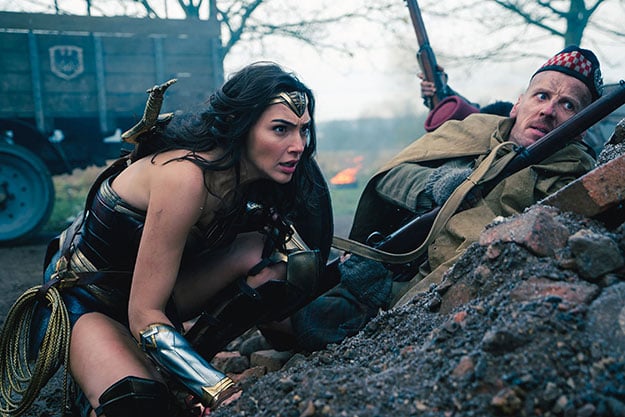
Wonder Woman is a spectacular delight, up till the obligatory and repetitive last-act combat of the gods. Sweet and funny but with a kick to it, this movie pulls off the rare pop culture feat of hitting the dead center of the Zeitgeist, without breaking a sweat. Though it rightly shuns topical references, it makes a tiara seem as revolutionary as a pussy hat, with the message “love trumps hate.” For the next few months, the word “Amazon” will no longer immediately refer to an online retail giant but to the female warriors who inhabit an island kingdom. And “Princess Diana” will summon not only Britain’s tragic “people’s princess” but this film’s triumphant goddess (soulfully embodied by Gal Gadot), who leaves the Amazons’ island with dashing American flyer turned Allied spy Steve Trevor (Chris Pine, having the time of his young life). She aims to conquer Ares, the God of War. Along the way, she brings World War I to its bitter end.
It might sound overly ambitious for a superhero film to transport The Great War into blockbuster American pop culture, but Wonder Woman does it deftly and movingly. (And, to our national shame, what other form of mass entertainment has marked this momentous centennial?) The original Wonder Woman fought the Nazis, but it’s surprisingly pungent to depict her fighting “the war to end all wars.” Ending war is what she thinks she’s doing when she and Steve team up to stop the evil General Ludendorff (Danny Huston) from using a lethal gas devised by evil genius Dr. Maru aka “Dr. Poison” (Elena Anaya).
Diana believes the general is Ares in disguise. Is she the one true heir of a special Olympian legacy? Does the God of War actually walk 20th-century Earth? Suspense and magic meld in Wonder Woman. Combining a superhero origin story with a combat film, an espionage caper, and an apocalyptic ultra-fighting championship (the weakest link), the director, Patty Jenkins, recaptures the scintillating looseness comic books once had, before they became “graphic novels.” Jenkins and screenwriter Allan Heinberg generally keep the tone supple and the narrative nimble, even while erecting a modern-day frame and navigating myths within myths—the movie is mostly one headlong flashback.
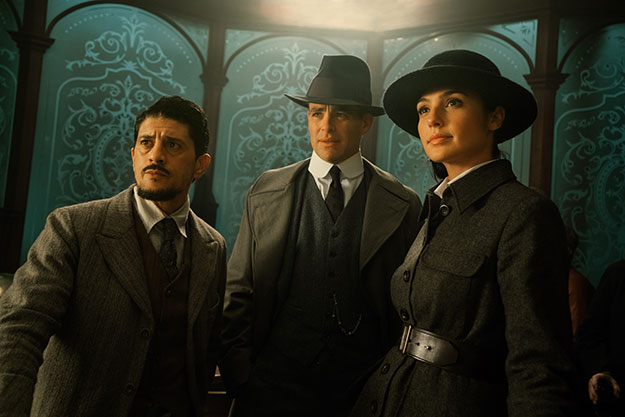
The filmmakers give us exactly what audiences want from a Wonder Woman movie—powerful women in classical armor training for breathtaking combat—then leaven it with the farcical sight of Diana as a tyke (Lilly Aspell) playing Amazon-see-Amazon-do with martial arts. They unveil their creation story in animation that resembles a pop art Sistine Chapel with 3-D figures and cartoon energy bolts. On her home island of Themyscira (known in older comic books as “Paradise Island”), Diana’s mom, Queen Hippolyta (Connie Nielsen), tells her about Ares, who poisoned mankind and hates the Amazons; Zeus created the female warriors to redeem men via love. Ares killed off the rest of the gods. Zeus, himself critically wounded, severely weakened the God of War and, for the Amazons, created Themyscira as a haven, where they could prepare to defeat Ares if ever he were to rise again. Hippolyta tells Diana she sculpted her out of clay (she’s the only baby on the island), but early on Jenkins teases an alternate birth narrative. When Hippolyta releases Diana to train with General Antiope (Robin Wright), Hippolyta’s sister, she reveals matchless strengths and instincts and extraordinary super-powers, such as the ability to create convulsive force-fields when she slams two metallic cuffs together.
Wonder Woman moves with sumptuous confidence even before Steve punches a hole through Themyscira’s invisible shield and crash-lands in glittering virgin waters. Jenkins lets each scene play out to the end. She gives you time to savor the fine-grained beauties of Matthew Jensen’s supernal cinematography (this movie exploits the depth and range of actual film). And Aline Bonetto’s swirling storybook production design, which includes harmonious Art Deco swirls and a woman-made rendition of Lake Powell’s Rainbow Arch, is in turn glorious, poignant, and inspiring. Everything seems fresh, not over-calculated or worried into emotional oblivion. It’s even kind of fun that Wright sounds more Scandinavian than Nielsen, who is Danish-born.
The movie’s MacGuffin is Dr. Poison’s manual of evil, with her handwritten array of coded formulae for WMDs. Steve has stolen it and the German navy tails him for it. The ensuing shoreline battle between Hippolyta’s warriors and the Kaiser’s marines fulfills the comic-book fantasy in Hawkman comic books as well as Wonder Woman—using weapons of the past to defeat modern firepower. Jenkins and her team employ variable speeds to keep the action credible, dynamic, and involving. They imbue their big Amazon set piece with choreographic glee. It’s exhilarating to see Wright as General Antiope launch herself like a catapult off a shield or release three arrows at once to bring down a trio of enemy fighters simultaneously.
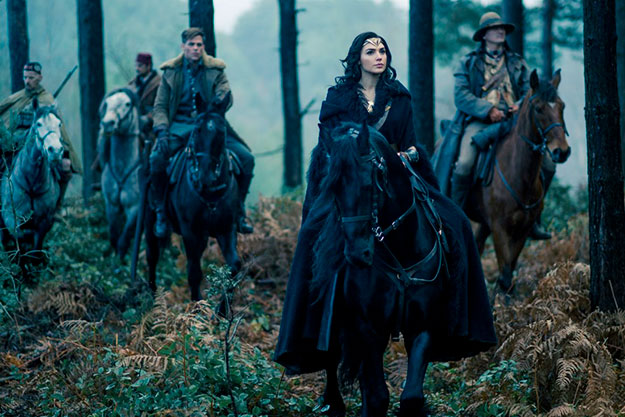
Credit for Gadot and Pine’s instant sexy-humorous rapport goes to these performers and to the understated flirty comedy in Heinberg’s script. (Heinberg shares story credit with Zack Snyder and Jason Fuchs.) Diana speaks nothing but the truth. Trevor, a gung-ho espionage agent, can’t help twisting himself into verbal knots. She treats him partly as a novelty, partly as a sidekick and instructor. She can be devastating when she’s matter-of-fact. Espying him toweling off naked in an Amazonian hot tub, she asks whether he’s a typical man. Rattled, he replies he’s “above average.” Even when he gets comfortable with her, he never fully shakes his disbelief over how lucky he was that he found her—or, rather, that she found him. Playing a second banana who’s very close to the top banana liberates Pine’s gifts for irony, abashment, and romantic comedy. Pine builds his performance with cunning. He’s amiably mock-heroic, then stirringly heroic. He makes us see why Wonder Woman would fall in love with him.
Gadot is mind-bendingly good—naturally supernatural. The key to her performance is playing Diana as the protagonist in a delayed coming-of-age story. On her island she’s constantly proving herself or discovering new and unexpected powers. In London, where she and Steve visit the War Office, or Belgium, where she blazes through the trenches and helps save a town from German terror, she keeps learning about human fashions, foibles, duplicities, and atrocities, without losing her belief in mankind’s potential redemption. Her tragic experiences strengthen her faith in the healing power of love. Gadot creates a Wonder Woman for all ages, infusing childlike earnestness and idealism with adolescent intensity and adult heft. She’s an acrobatic comedian when she tries on 1918 fashions and tests whether they allow her combat moves full sway. She’s an offhand drop-dead gorgeous model when she sports a modified Brit uniform with slouch hat and specs. And she’s a full-scale romantic heroine when she gives her all for love.
At no point does Wonder Woman become a one-woman show. In London, Steve reconnects with his cheerful can-do secretary Etta Candy (the uproarious Lucy Davis) and enlists the support of two trusted special ops, the fast-talking French Moroccan con-man and ex-actor Sameer (the charming, effusive Saïd Taghmaoui) and the PTSD-afflicted Scottish sharpshooter Charlie (played by Ewen Bremner with his usual boisterous lyricism, especially when he sings Robert Burns’s “Green Grow the Rashes, O”). On the Continent, they join up with a Native American smuggler known as “Chief” (Eugene Brave Rock, a massive presence), while Steve reports back to his silent partner in the Imperial War Cabinet (the marvelously elusive David Thewlis).
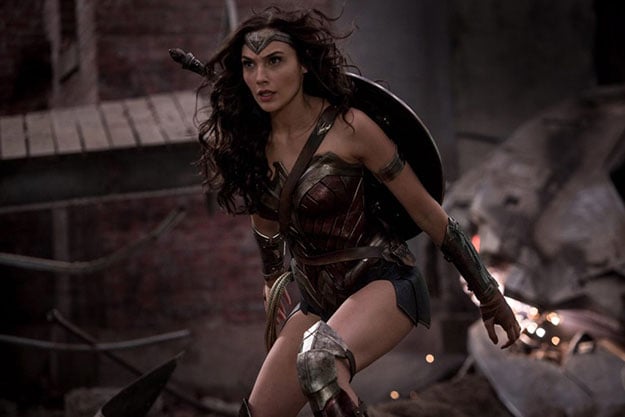
Along with Anaya’s Dr. Poison, who draws out her best lines with sardonic menace, each gets a moment to shine in Bonetto’s glittering showcase. The woman who designed one of my favorite movies of this millennium, Jean-Pierre Jeunet’s A Very Long Engagement, outdoes herself in Wonder Woman. Until the battering finale, she and Jenkins focus the action so that even in the ravages of no-man’s-land, the sound and fury signify something. When we respond to Wonder Woman drawing German fire with her shield, we’re reacting to the nobility behind the conception. When Steve and Diana dance in the snow at night outside a Belgian café, we feel their warmth slicing through the darkness.
So it’s doubly deflating that the climactic confrontation between Wonder Woman and Ares plays like just one more cage match sadly plucked out of a cage. It’s a noisy synthesis of every head-pounding clash between Good and Evil we’ve seen in the past two decades. How often can we watch a super-antagonist mold asphalt and metal like Silly Putty and push the protagonist to the breaking point? It’s bizarre to think such a sight could be a bit ho-hum. After that gargantuan conflict, the denouement is blissfully quiet.
Earlier, when Diana and Steve amble through the streets around Selfridge’s department store, they pass shop signs for “Bunbury of London.” It must be a reference to Oscar Wilde’s notion of “Bunburying” in The Importance of Being Earnest—using a fictional excuse to get out of doing something humdrum. Whether Bonetto, Jenkins, or a set decorator planted that homage, it speaks to this entire production’s resistance to anything tedious—except, that is, for the last-god-standing climax.
Wonder Woman puts many of the comic book’s gimmicks on full display, from her Lasso of Truth to her bullet-deflecting bracelets. Mostly, though, the movie’s freshness derives from the purity of feeling that emanates from the core of its star. It has taken nearly eight decades for “America’s guardian angel” to swoop onto the big screen. Who knew DC Comics fans were really waiting for Gadot?
Michael Sragow is a contributing editor to Film Comment and writes its Deep Focus column. He is a member of the National Society of Film Critics and the Los Angeles Film Critics Association. He also curates “The Moviegoer” at the Library of America website.




